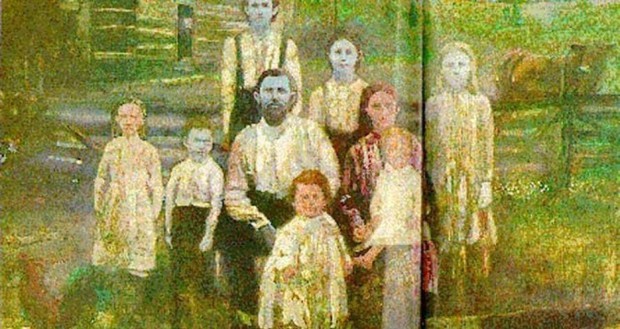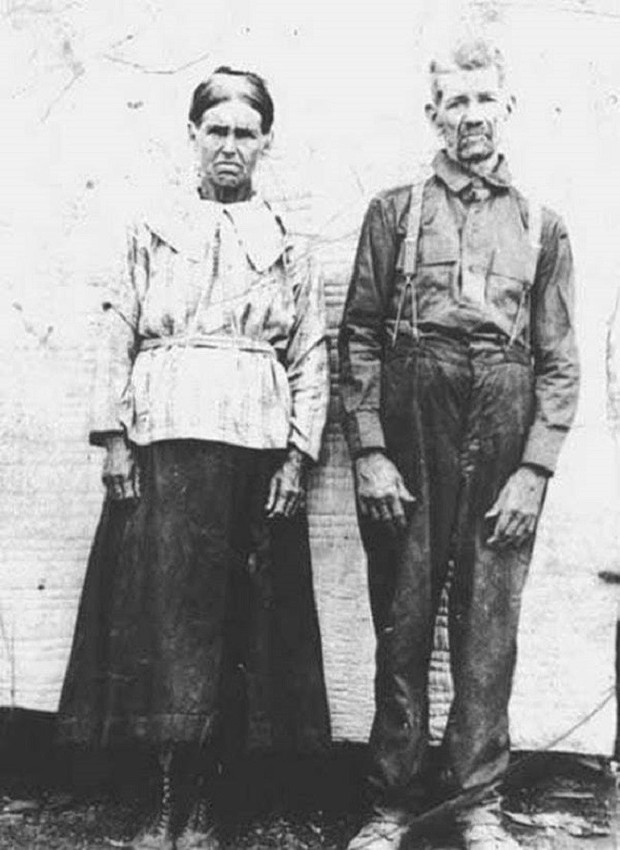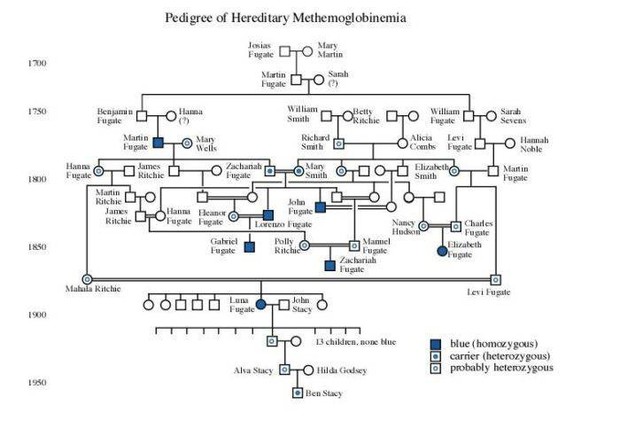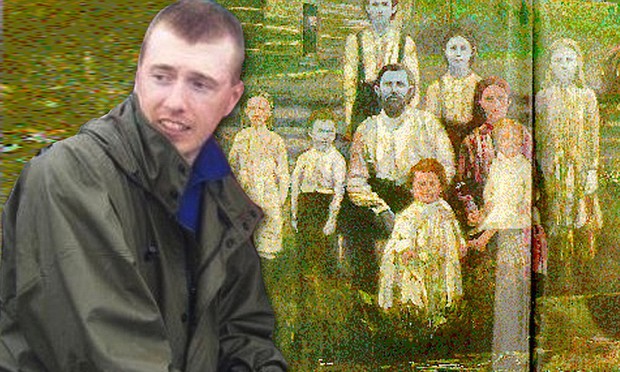For nearly 200 years, the Fugate family has lived in isolation from the outside world and has continued to give birth to “descendants” with strange green skin.
In 1975, when little Benjamin “Benjy” Stacy was born, nurses and doctors were shocked and extremely confused by his strange skin. Instead of having red skin like other normal children, Benjamin has green skin. Doctors were extremely worried and suspected the boy had some illness, so they immediately called an ambulance to take Benjamin to the University of Kentucky Medical Center for more careful examination.
After 2 days of careful research, the top doctors at the hospital still couldn’t understand why this boy had such strange skin. Then, the boy’s grandmother asked: “Doctor, have you ever heard of the Fugates family in the Troublesome Creek area?”. So the doctors went to Benjamin’s father, Alva Stacy, to tell the somewhat thrilling story of this “alien family”.
Benjamin “Benjy” Stacy is the youngest child born into a blue-skinned family living in the Appalachian mountains of Kentucky (USA) for the past 197 years.
The “sower”
In the early 1820s, a young French orphan named Martin Fugate traveled to America to start a business. Not long after, Martin married Elizabeth Smith and then settled down in a house on the banks of Troublesome Creek, a remote area in eastern Kentucky (USA). At that time, Elizabeth was a girl with pale, weak skin as white as a laurel flower that blooms every spring.

Martin and Elizabeth gave birth to seven healthy children. The only strange thing is that 4 of their 7 children have very strange blue skin. At that time, in rural eastern Kentucky, there were no roads to go, not even a railroad, so where could there be a doctor to help Martin and his wife.
Luckily, the Fugate children developed completely normally in terms of intelligence and health, hardly suffered from serious illnesses, and even lived to be 80-90 years old. However, they have to endure great discrimination, and then live almost isolated from the rest of society.

Because they live in a remote place, isolated from the outside world, when they grow up, the children of the Fugate family only socialize and marry people in the same village or neighbors, leading to inbreeding. For example, Martin Fugate’s son, Zachariah, married his biological aunt. Blue skin color therefore persists in this family, like a curse.
Time passed until in the early 1960s, some members of the Fugate family began to feel ashamed of their strange green skin. So two members of the Fugates family went to see Madison Cawein, a young hematologist working at the University of Kentucky clinic, to find a cure.

Madison Cawein decided to find a solution for this rare phenomenon. He went to the Troublesome Creek area to piece together the stories of the green family and create a genealogy. He searched and discovered many more similar cases, even finding a group of green-skinned people living in the forest due to self-esteem. From those pieces, Madison built the genealogy of the blue family, all of whom are… descendants of the couple Martin and Elizabeth.
“Their skin was really dark blue. When I first met them, I was scared that they were dead,” Cawein shared in the report.

Looking for a satisfactory explanation
After doing blood tests, Cawein discovered that these people had very high levels of methemoglobin (MetHb). Metabolic disorders of MetHb and Hb in the blood make their blood color as dark as chocolate due to lack of oxygen. If you look at them, you will see that their lips are dark purple and their skin is pale blue.

In most white people, the red hemoglobin of the blood in the body shows through their skin as pink. For the Fugate family, too much methemoglobin in their blood turned their skin blue.
This is a recessive gene, so as long as both parents inherit it, their children will have the skin color disorder, and the rate of having children with it is 1/4. Looking back at the Fugate family’s ancestral history, it is known that Martin’s mother also had pale skin, so Martin carried the recessive gene for this disease. Until combined with the recessive gene from Elizabeth, it created descendants with blue skin.
Without the isolation and inbreeding of the Fugate family, this disorder would be extremely rare in their bloodline.
However, the Fugate children lived in a small area, so finding a marriage partner was very limited. They wander around marrying in villages and neighbors, over many generations becoming inbreeding marriages, thus giving recessive genes more opportunities to express themselves.
After a period of research, Cawein came up with a way to “repel the curse” of this blue-skinned family for hundreds of years. He injected Patrick and Rachel (two members of the blue-skinned clan) with blue methylene, turning their skin pink.

“Their skin actually changed color. It was a very dramatic experience,” Cawein wrote in the report. The effects of methylene blue are only temporary, because it is quickly eliminated by the body through excretion, so it must be taken daily to maintain rosy white skin.
The curse is lifted
Within a few months after birth, little Benjamin’s skin color began to change to a skin color quite similar to other babies without the need for medication. By the age of 7, almost all the blue color on the boy’s skin had completely disappeared, suggesting that he may only carry the recessive gene of his father or mother.
In the following years, the eastern region of Kentucky began to develop more thanks to coal mines and a railway transportation system dating back to 1910. Many people came from other places, the population increased, so people in The Fugate family had the opportunity to meet and marry outside. The frequency of expression of recessive genes that cause blue skin is gradually decreasing and there are no longer any blue-skinned children appearing.





